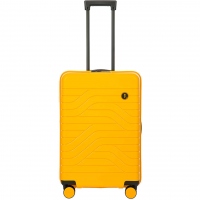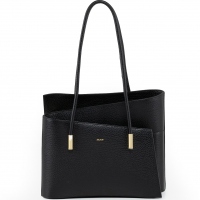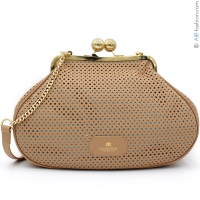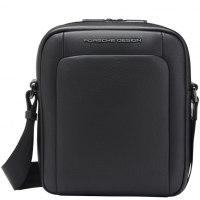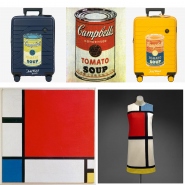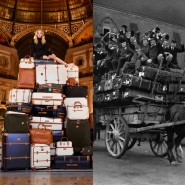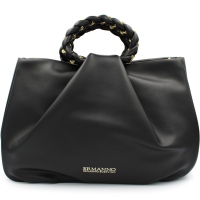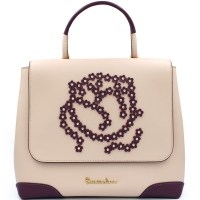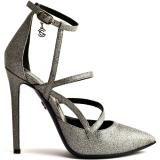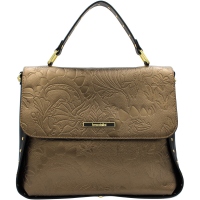If there is a thing that everyone has today, it’s a backpack. It’s convenient, spacious and can be carried in a thousand different events: when going on a trip or to the office, as a fashion accessory...
Today, there are many different backpack models that perfectly suit both men and women.
The backpack history dates back thousands of years. At different times, craftsmen and inventors thought of their original methods of carrying heavy things. Many of these ideas were forgotten, but people from different cultures living on different continents and always invented similar devices. In this article, we will trace the entire way of the backpack development – from the first wooden frame backpack to a high-tech modern one.
The oldest backpack model — 3,300 BC
More than 5,000 years ago, a shepherd lived in the Eastern Alps, between present-day Italy and Austria, in a place located in today’s Tyrol. Unfortunately, an arrow tragically cut his life short when he was 45 – he bled to death on a mountainside. In 1991, two German mountaineers discovered this ancient man’s body frozen into a glacier.

The permafrost preserved his body quite well. The found mummy was called Otzi. Archaeologists found quite a few of his personal belongings, many of which are poorly preserved. Along with the remains of a bow, a quiver with arrows, and a hunting knife made of flint, they found a walnut framework, which still stirs up disputes. Many archaeologists believe it to be the framework of a wooden “backpack”.

The scientists assumed that a leather bag was attached to the wooden construction, which Otzi fastened to his back with leather straps and used to carry his belongings.

This finding was used as a basis for reconstructing an ancient backpack model, which is now exhibited in the Museum of Natural History in Dortmund.
One of the arguments that supports the theory that this devise is a backpack prototype is the fact that even in the present-days Alps there are traditional wooden shoulder bags called Kraxe.

A kind of backpack existed in the Roman Empire. Roman legionnaires were equipped with “loculus” – leather bags fixed on a marching pole along with other belongings.

Bags that most resembled the modern backpack appeared in medieval Europe. These were baskets with shoulder straps fixed on the back. They were used by farmers to work in the fields and by town residence to go to the market and carry goods.

Backpacks similar to the one used by ancient man Otzi, in the 19th century came into use in Germany and France. These were the work tools of hired porters and were used to carry goods.

Frame shoulder bags were also found on the Scandinavian Peninsula. One of the best-preserved findings is exhibited in the Norwegian Forestry Museum. It looks like a sack with a wooden frame and leather straps. This backpack prototype is called Sekk med Meis (One-Breasted Bag) and dates back to around the 1880s.
Backpacks in Asia.
Let’s move our research from Europe to the eastern part of the Eurasian continent. Namely, let’s take a look at the bags used by the indigenous peoples of the Siberian taiga. The Siberians also had frame shoulder bags somewhat similar to ancient man Otzi’s “backpack”. These devices were called “ponyagi” or “rogulki”. The Siberian peoples invented them many centuries ago and use up to this day.

“Ponyaga” is a pallet woven of willow or bird cherry twigs and fixed on a wooden frame. The side of the frame that touches the back is braided with birch bark. The load is tied to the “ponyaga” with straps. For ease of use, a handle is attached on the top of the wooden frame. “Ponyaga” is carried on the back on two leather straps.


“Rogulki” is a wooden frame that is hung on the back. The things carried are fixed between two horns and tied with ropes. This design isn’t very similar to a “backpack”, but it’s convenient for carrying large items because it weighs on the shoulders less due to the shifted gravity center.

“Rogulki” were found throughout eastern Siberia and Asia. They were extremely popular with porters living in Vladivostok in the 19th century. They even got their name from this device: “rogulshik” – the rogulki-carrying man.

In Korea, there was also a device called “Chigae” that resembled Rogulki. The written sources dated back to the end of the 17th century mention Chigae, but this construction appeared much earlier – in the 7th century.

From ancient times peasants living in central Russia and western Siberia used woven baskets of birch bark with straps called “Kotomka”. They were made of birch bark and thread of spruce roots. The Russian Kotomka is a version of the Alpine Kraxe.
Packs.
Now let’s go back to Europe. With military equipment made simpler and better in the 18th century, the first prototypes of soldiers’ army packs appeared.

The shape of soldier’s pack resembled the ancient Roman loculus with attached shoulder straps. As with the loculus, soldiers often attached additional belongings to the top of the pack, such as a rolled-up overcoat and a blanket. Soldier’s shoulder bags were made of leather or canvas and cloth. European armies were equipped with such packs. A satchel made of waterproof canvas was introduced in 1882. Many modern armies all over the globe use similar model up to this day.

During the American Civil War from 1861 to 1865, soldiers used two types of packs: hard and soft. These packs weren’t quite comfortable because they were heavy and had a wrong weight distribution.

Therefore, after the conflict between the north and the south ended in 1866, the American colonel Henry S. Merriam invented and patented a new type of soldier’s pack. A frame consisting of wooden slats was attached to the pack and to the soldier’s belt, thus redistributing the load. This wooden frame was also used as a basis for making small shelters in the camp.

This pack was neither convenient nor practical, so the inventor couldn’t get a state order for a long time to start mass production of this innovation.

A Norwegian entrepreneur Ole Bergan developed a new model of pack for civilians in 1886. The pack had a rigid frame made of lightweight metal, which repeated a human back’s shape. Ole Bergan believed that a pack should be adjusted to its owner’s height and body shape to be convenient for carrying cargoes.

This backpack was somewhat similar to above-mentioned Sekk med Meis. The product of the Norwegian company was famous all over the world. And the backpack brand Bergans exists to this day.
This backpack model was improved in the beginning of the 20th century. In the 1920s, an American hunter Lloyd F. Nelson was traveling around Alaska and saw a traditional satchel of the local Inuit Indian tribes made of wood and seal leather and modified it.

Nelson’s modified backpack model was put into mass production as the Trapper Nelson’s Indian Backpack. The backpack’s design allowed to distribute weight evenly over the back. Later, this backpack was called the Alaska Backpack.

The Alaska Backpack model was also adopted as equipment of the U.S. Army.
From tarpaulin to nylon, from the military to the hikers and schoolchildren.
As technology advanced, backpacks migrated from the military to the civilian use because of their convenience. Until 1938, backpacks were used by hunters, soldiers, and laborers to carry heavy cargoes.

But in 1938, Gerald Cunningham – a former military of the U.S. Mountain Division – added a zipper to a lightweight backpack model. This was a turning point in the backpack history. The convenient zipper made it possible to design new shapes that distributed weight more efficiently. Later, Gerald Cunningham founded his company that produced hiking equipment.


Another important moment in the backpack development was invention of nylon. This material was first synthesized in the USA in 1935, in the DuPont laboratory that was engaged in chemical research. The new material was as strong “as steel” and thin “as a spider’s web”. It was widely introduced in production of consumer goods – from toothbrushes to stockings and outwear. From 1942 and up to the end of World War II, nylon factories worked for the military, but when the war ended, nylon became available to the general public.


An American couple of seamstress Nena Kelty and her husband hiker Dick Kelty created a prototype of a civilian nylon backpack in 1952. Together they started handicraft production of their invention: Dick made the backpack metal frame and Nena sewed the backpack itself of nylon.

This backpack became a tourist know-how. It was with this backpack that the team of mountaineers of Norman Dyhrenfurth and Jim Whittaker climbed Mount Everest in 1963.
In the 1960s, backpacks were adopted for use in everyday life.
During this period, a school backpack was invented. Until the 1930s, schoolchildren tied textbooks with a rope and carried them in their hands. Later, leather schoolbags appeared. Next, these bags received straps and schoolchildren began to carry them on the back.


In the 1970s – the heyday of the hippie era – backpacks turned into a fashion accessory. At the time, a backpack by the Jansport company created in 1967 was the most popular among young people. Fashionable backpacks of the 1970s were made of multicolored nylon, vinyl, and leather with zippers. This backpack was popular both among hippies and students.


In 1984, Italian fashion house Prada brought a women’s black nylon backpack Vela (Sail) onto the fashion runway. Thus, designer Miuccia Prada turned the backpack into a favorite women’s accessory.

In the early 2000s, Italian company Piquadro offered comfortable business backpacks with pockets for a laptop and tablet, as well as packed with high-tech innovations. Nowadays, urban backpack models with a “futuristic” trend are in high demand. Both men and women carry them.



Every year, new high-tech materials are presented at the Mipel exhibition in Milan: water-resistant and durable, which even a knife can’t cut.
Backpacks are stuffed with electronics: LED-lighting, GPS-sensor, sand phone chargers. Besides, you can find backpacks with built-in solar panels, code locks, “anti-theft” metal cables, and backpacks with RFID protection (against copying credit cards).

And here we are in the present, where the backpack has become our inseparable everyday companion. Indeed, it’s not only useful but so fashionable that now it is used as an accessory instead of a bag.
And what’s your favorite backpack? Tell us about it in a comment!

dinosaur-Backpack by Braccialini, autumn-winter collection 2019-2020





 Online Shop
Online Shop
 Terms and Conditions
Terms and Conditions
 Payments
Payments
 Feedback
Feedback
 Customer Support and Contacts
Customer Support and Contacts
 Discounts
Discounts
 Worldwide customs duties
Worldwide customs duties


 English
English
 Русский
Русский
 Deutsch
Deutsch
 Español
Español
 Français
Français

 +39
+39 info@air-fashion.com
info@air-fashion.com  Enter
Enter

